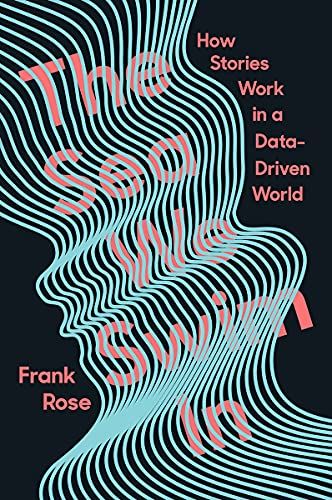If we live in a sea of stories, then narrative thinking means being aware of the sea we swim in. It means realizing that stories constitute a distinct mode of thought, one that plays such a central role in human experience that anyone who wants to sell something, communicate ideas, motivate people, or change their minds should understand how they work. Narrative thinking benefits from the example of “design thinking,” a concept that has come to guide decision-making in organizations large and small.
Design thinking applies techniques designers use to problems outside the traditional realm of design.
The essence of design thinking is creative problem-solving. Designers face problems all the time: how to build a smartphone that’s intuitive and easy to use, how to structure a shopping site so people won’t abandon it in frustration, where to put the “on” switch or the “buy” button so people can actually find them. Design thinking applies techniques designers use to problems outside the traditional realm of design: how to get people to stick to a drug regimen, or what to do about the rise of obesity in children.
IDEO’s Design Thinking Process
- Empathize with the user.
- Define the problem.
- Ideate around it.
- Prototype a solution and test it.
- Start over if necessary.
The idea has been around since at least the sixties. But it wasn’t until the nineties, when engineering professors Rolf Faste and David Kelley joined forces at Stanford, that it started to gain traction outside the field of design. Kelley headed a small firm in Palo Alto, Stanford’s hometown, that grew through a set of mergers to become the global design and consulting firm IDEO. Throughout the nineties, Kelley and his colleagues systematized their methodology into a five-step process—empathize with the user, define the problem, ideate around it, prototype a solution, test it, and then start over if necessary. The process is broad and robust enough to be applied to almost any problem.
“Design is now too important to be left to designers.”
Design thinking was ideal for the Silicon Valley business environment, which valued creativity in a fast-changing, competitive landscape. An analysis by the Design Management Institute found that 16 design-centric firms—Apple, Nike, Starbucks, and Target among them—collectively outperformed the S&P 500 by 211 percent between 2005 and 2015. As IDEO chief executive Tim Brown put it in his book Change by Design, “Design is now too important to be left to designers.”
The Attention Economy: Living in a Rabbit-Rich World
A little more than 50 years ago, the economist and cognitive psychologist Herbert A. Simon delivered a lecture in which he talked about bunny rabbits. His neighbors had recently purchased a pair of bunnies for their daughter, and since the rabbits were of different genders the neighbors soon found themselves living in, as Simon put it, “a rabbit-rich world.” This would have consequences not only for the neighbors but for the local food supply as well. “A rabbit-rich world is a lettuce-poor world,” Simon observed, “and vice versa.”
We live in an “attention economy” in which we have too much information and not enough attention to devote to it all.
Of course, Simon wasn’t really there to talk about bunny rabbits. His actual topic was information, which was exploding even in the sixties, and what he said about it has been cited many times since: “In an information-rich world, the wealth of information means a dearth of something else: a scarcity of whatever it is that information consumes. What information consumes is rather obvious: it consumes the attention of its recipients. Hence, a wealth of information creates a poverty of attention and a need to allocate that attention efficiently.”
Hence the notion that we live in an “attention economy” in which we have too much information and not enough attention to devote to it all. But the information glut has also had a less obvious effect: it has fueled the triumph of design. As Richard Lanham, a professor emeritus of rhetoric and English at UCLA, points out in a fascinating book called The Economics of Attention, when attention becomes the scarce resource, "some fundamental changes occur. The devices that regulate attention are stylistic devices. Attracting attention is what style is all about. If attention is now at the center of the economy instead of stuff, then so is style. It moves from the periphery to the center. Style and substance trade places."

No reason to be surprised, then, that design thinking should take hold just as we began to be deluged by information. “‘Design’ is our name for the interface where stuff meets fluff,” Lanham observes—where physical objects, which used to be what mattered, meet our willingness to give them our attention, which is what matters now. Apple’s performance began to skyrocket after Steve Jobs returned from exile, put a little-known but highly talented Londoner named Jony Ive in charge of design, and made style a key concern. The ascendancy of style applies as well to websites, video games, travel experiences, ad campaigns, art works, just about anything.
And anything with style can become what Lanham calls an “attention structure”—a shiny object that exists not for its own sake or to serve some greater purpose but to engage our attention. Dairy farming in Switzerland, Lanham reports, is subsidized at a rate of $1,000 per cow per year so the Swiss and their visitors can enjoy a pastoral landscape. (Well worth it, in my view.) Andy Warhol achieved celebrity in the early sixties by painting Campbell’s soup cans and Brillo boxes and putting them in art galleries, where they became an instant media sensation. Art critics who had championed the abstract expressionists—Jackson Pollock and Willem de Kooning and all their self-consciously heroic friends—were aghast at the lack of depth and personal feeling in pop art. Andy feigned indifference. Lanham again: “The surface, he said, was all there was . . . He sung not of the soup but of the can it came in.” Which is how shiny object syndrome and design thinking came to the fore at the same time.
* * *
Adapted from The Sea We Swim In: How Stories Work in a Data-Driven World by Frank Rose. Copyright © 2021 by Frank Rose. With permission of the publisher, W. W. Norton & Company, Inc. All rights reserved. This selection may not be reproduced, stored in a retrieval system, or transmitted in any form by any means without the prior written permission of the publisher.





